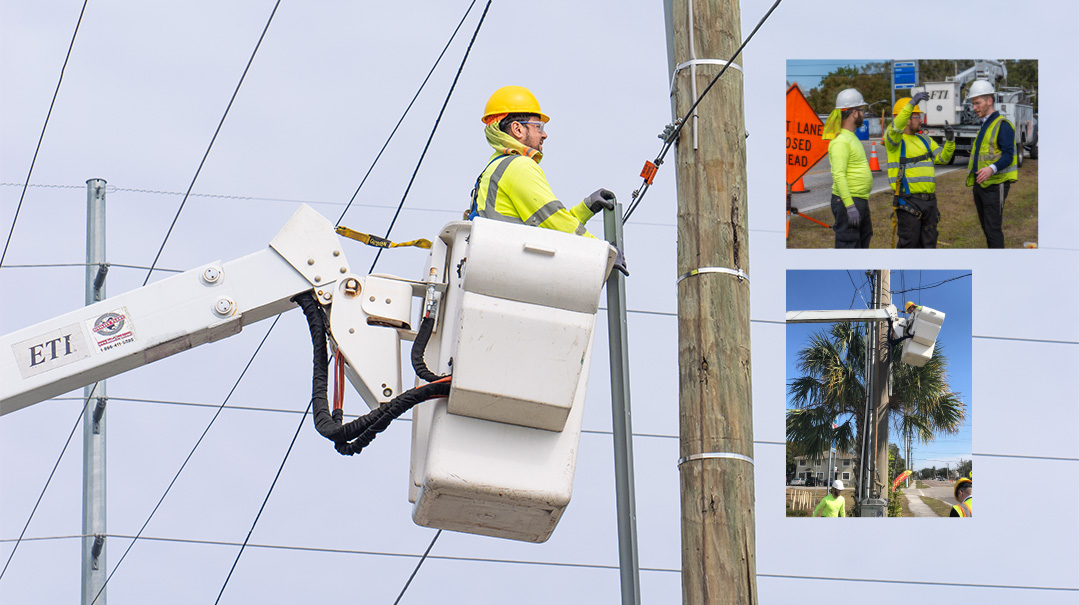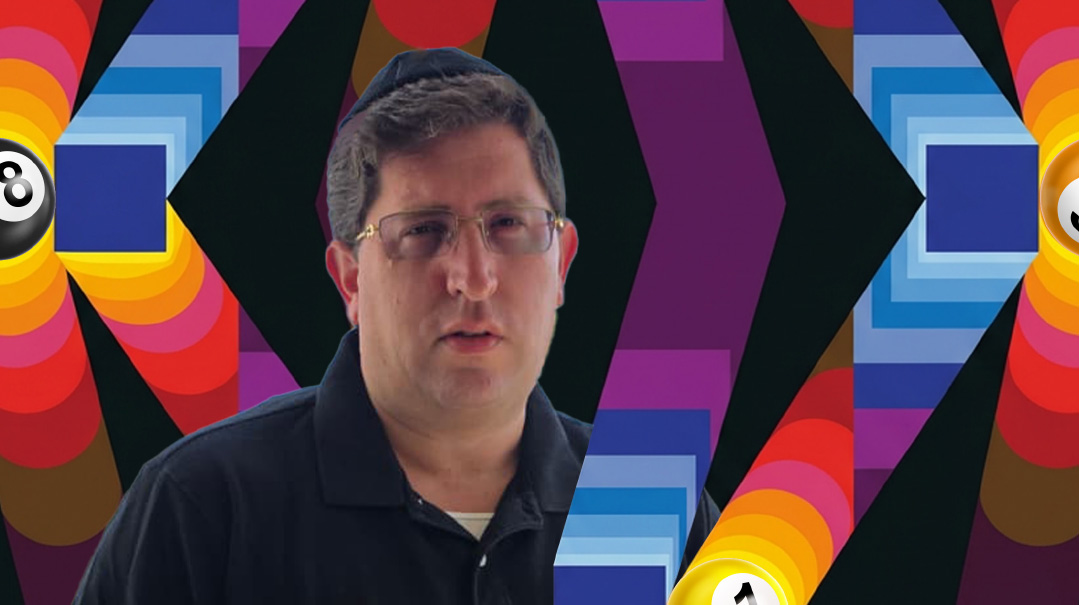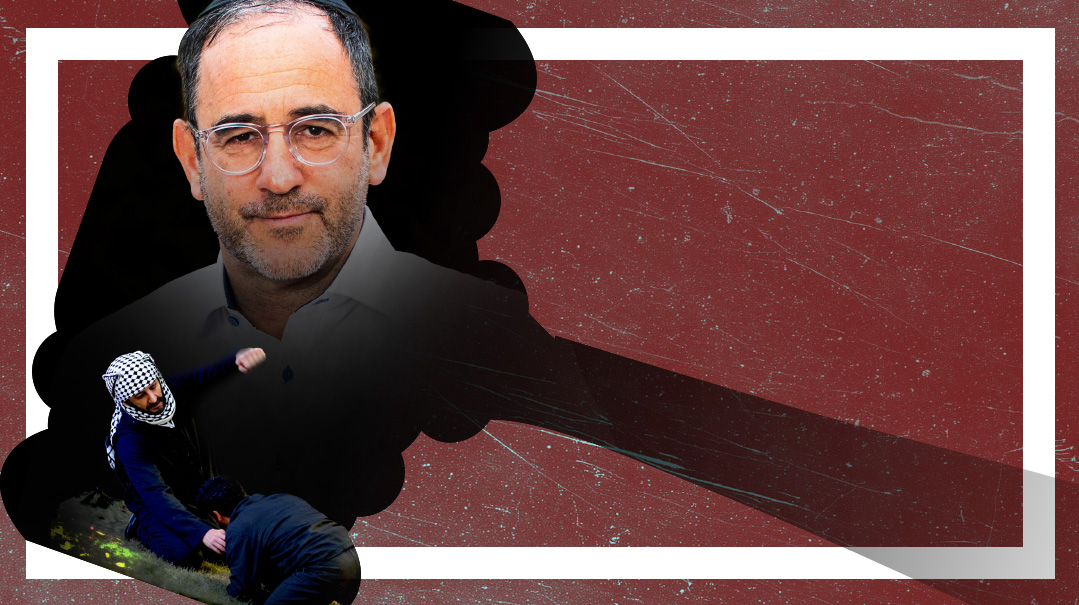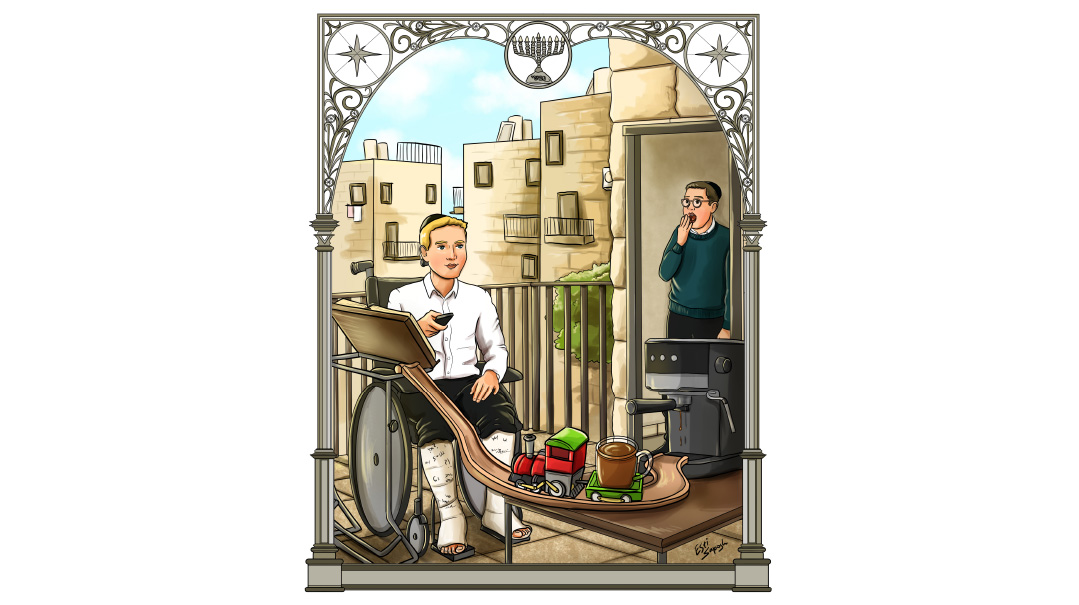Carry On
| April 8, 2025By air, land, and sea, this eiruv expert holds the line

Photos: AbstractZen
The eiruv is a ubiquitous feature of many frum communities, allowing people to carry on Shabbos. But few are aware of the complex halachic issues inherent in installing and maintaining a kosher eiruv. Rabbi Mordechai Paretzky is committed to raising awareness and upgrading standards, and whether he is perched on his bucket truck, rowing a pontoon, or scaling fences, he is always determined to carry on
ON a sunny January morning in Tampa, Florida, motorists slow down to safely pass a utility bucket truck parked off to the side. Half of the hulking vehicle is on the shoulder while the remainder protrudes out into the road. Perched in the truck’s bucket some 20 feet up in the air is a man dressed like your run-of-the-mill utility worker, complete with reflective gear, a hard construction hat, and a yellow bandana hanging out the back of the hat to shield his neck from the sun’s blaze.
Down on the ground is another worker, similarly outfitted sans the vest.
“Send me up a U-guard!” the first man shouts to his colleague below, referring to those unassuming, elongated U-shaped metal or plastic covers that inconspicuously grace utility poles, shielding the cables and wires affixed to them from exposure to the elements.
On cue, a ten-foot-long U-guard is produced from the truck’s bed and sent up. After three minutes of drilling, it’s secured and fastened in place, running from directly beneath the telephone wire connected to the utility pole and ending about halfway down the pole.
The second worker picks up where the first leaves off, adding another U-guard to the bottom half of the pole. After making sure it’s secure and positioned correctly, the first worker lowers himself to the ground. The pair collect the orange safety cones set up around their truck, fold the large “Utility Work Ahead” traffic sign, and jump back into the truck, rumbling off to the next pole on their list.
The duo making the rounds this morning in Tampa’s Lake Magdalene neighborhood aren’t your garden variety utility workers fixing a sagging wire or restoring a cable connection — they are talmidei chachamim and eiruvin experts Rabbi Mordechai Paretzky of Chicago, Illinois, and Rabbi Boruch Gore of Cherry Hill, New Jersey. They have come at the behest of the local fledgling frum community of Tampa to install the city’s first-ever community-wide eiruv.
Tampa is just one of 12 cities the globe-trotting Rabbi Paretzky has visited in the past three months. Since October of 2024, he’s been to (deep breath): Louisville, Kentucky; Minneapolis, Minnesota; Columbus, Ohio; Tucson, Arizona; Atlanta, Georgia; Houston, Texas; St. Louis, Missouri; Boca Raton, Florida; Indianapolis, Indiana; Northbrook, Illinois; and the Peterson Park, Skokie, and West Rogers Park neighborhoods in his home city of Chicago.
Like hundreds of communities across the world, the Orthodox populace in these locales has taken steps to install citywide eiruvin, a feature that has almost become an ubiquitous staple of frum life in many communities, allowing people to carry outside their homes on Shabbos. Yet despite their prevalence and popularity, the construction and continued maintenance of these eiruvin require significant effort and expertise. Even veteran talmidei chachamim consider the halachos of eiruvin to be some of the most complex in all of Shulchan Aruch.
And theoretical knowledge isn’t enough. One has to be able to be immersed in both lomdus and Lowe’s, synchronizing the halachos with modern day city layout and infrastructure on which the eiruvin rely, such as highway barriers and utility poles. And then there’s the necessary diplomacy, dealing with rabbinic authorities, lay leaders, and elected officials. Thus, the ability to construct and maintain a halachically sound community-wide eiruv demands not just a mastery of halachah, but also a practical understanding of engineering, geography, zoning codes, construction, and navigating realpolitik, and the ability to string it all together.
Installing an eiruv isn’t for the faint of heart (or heights). But it’s become a calling for Rabbi Paretzky, who’s spent the last five years installing and inspecting hundreds of eiruvin, whether that means scaling heights in one of his three utility bucket trucks, slogging through muddy terrain, or rowing down Chicago’s North Shore Channel in his inflatable pontoon.
Now Rabbi Paretzky is on a mission to ensure that communities across the US have the resources they need to ensure their eiruvin are functioning according to halachah. As he zips across the country building, inspecting, and managing eiruvin, he’s also educating, urging upgraded vigilance, and empowering communities with the knowledge and practical tools they need to carry on.
Oops! We could not locate your form.







